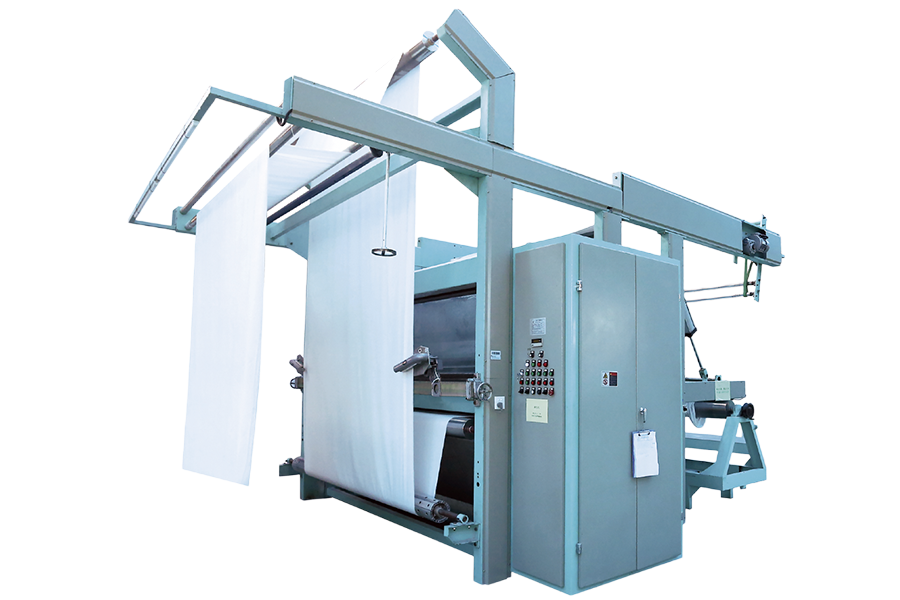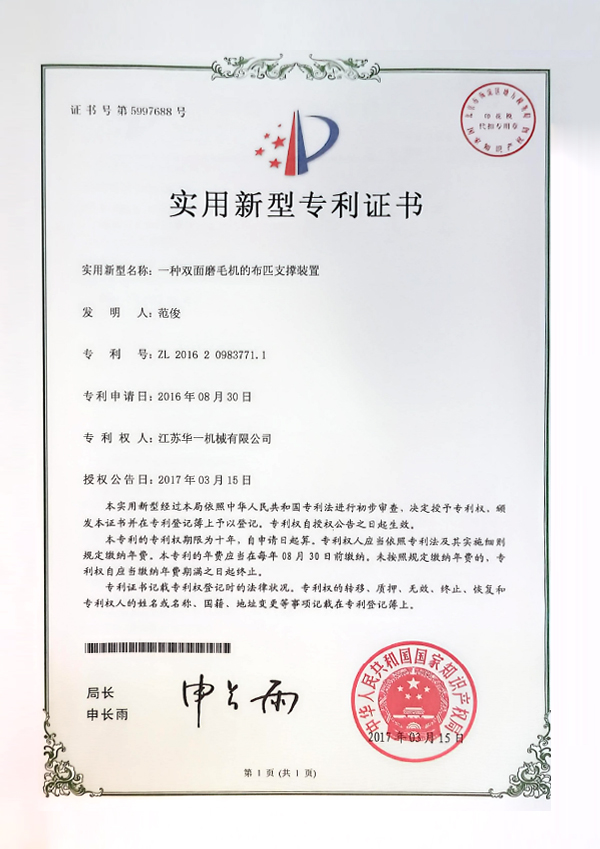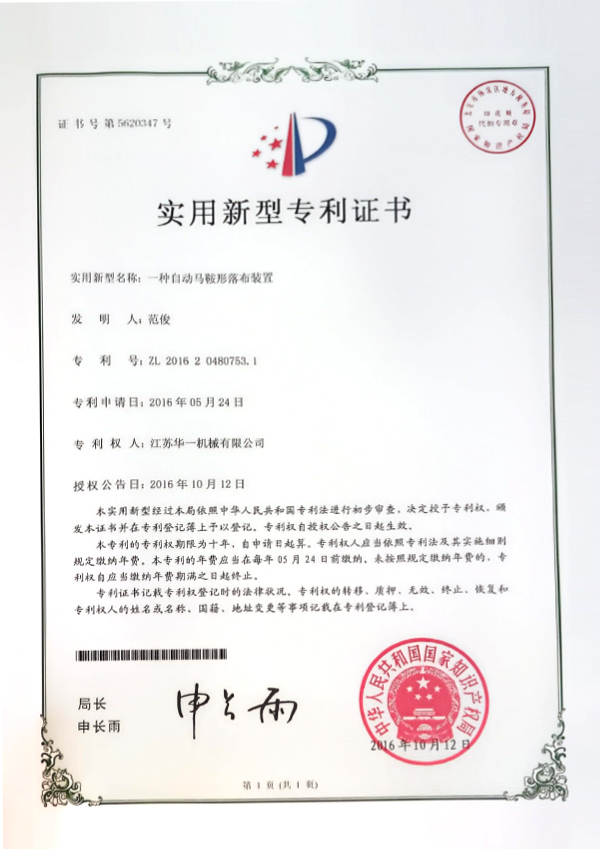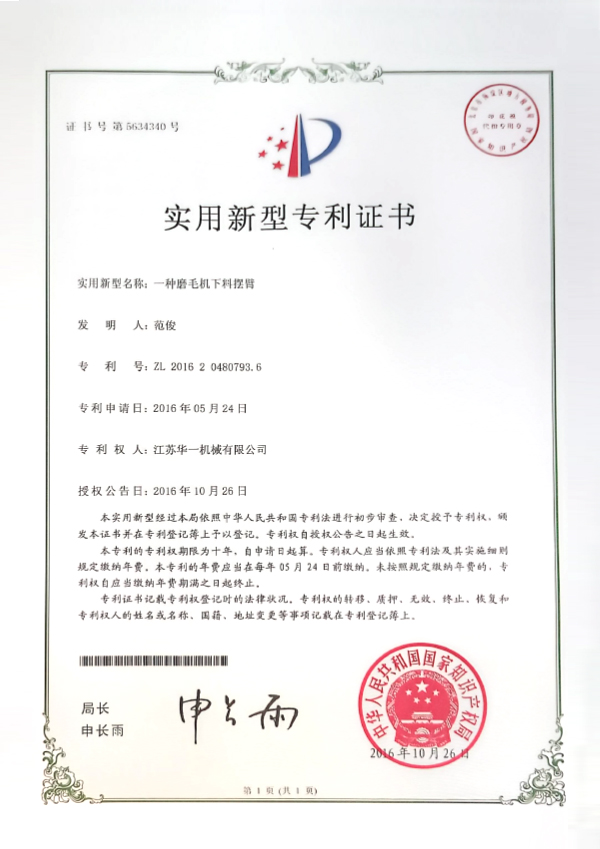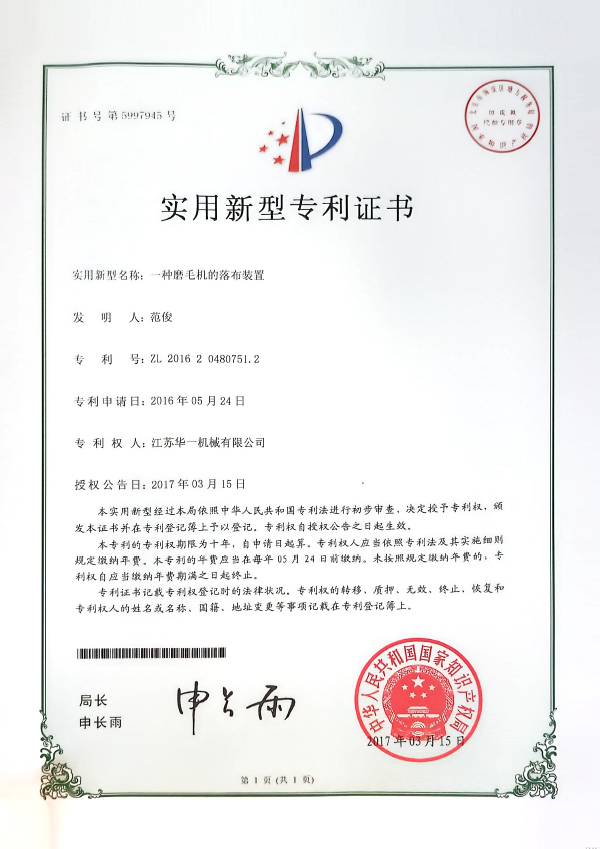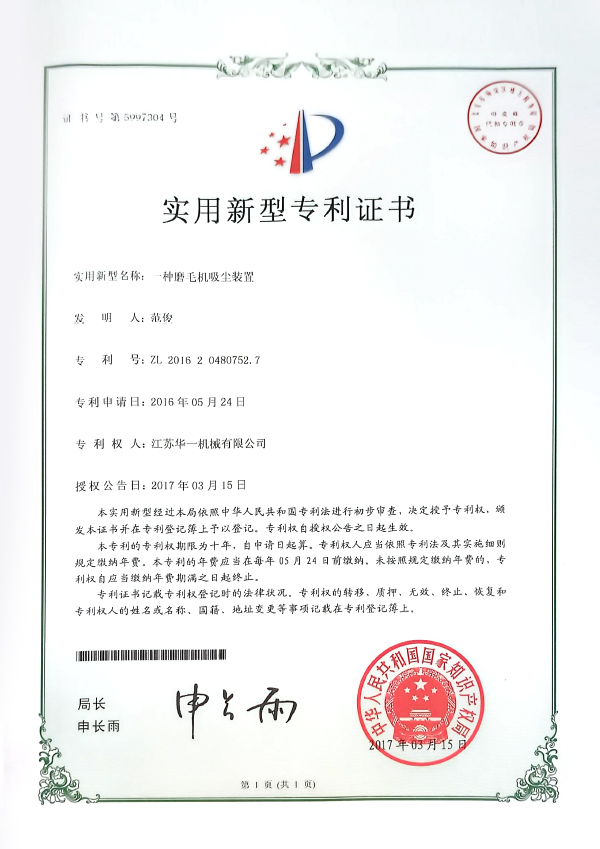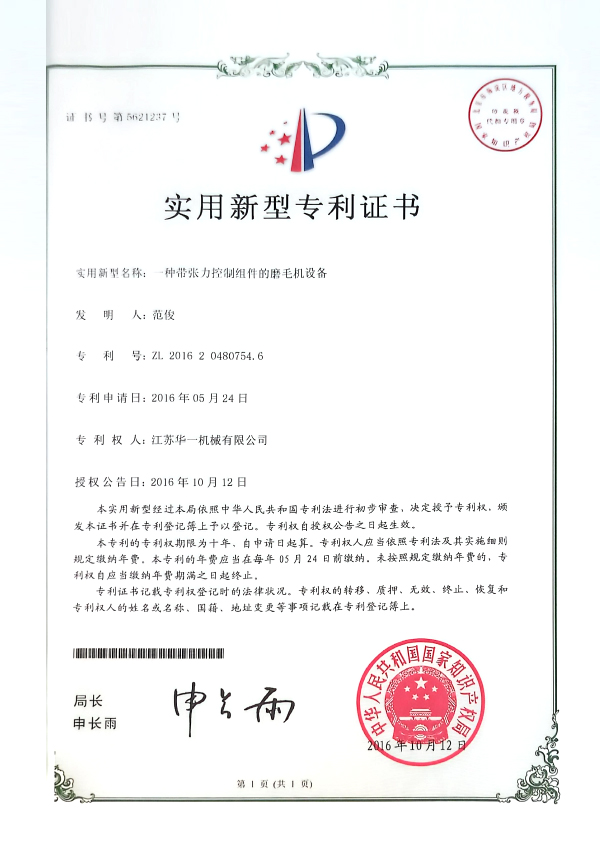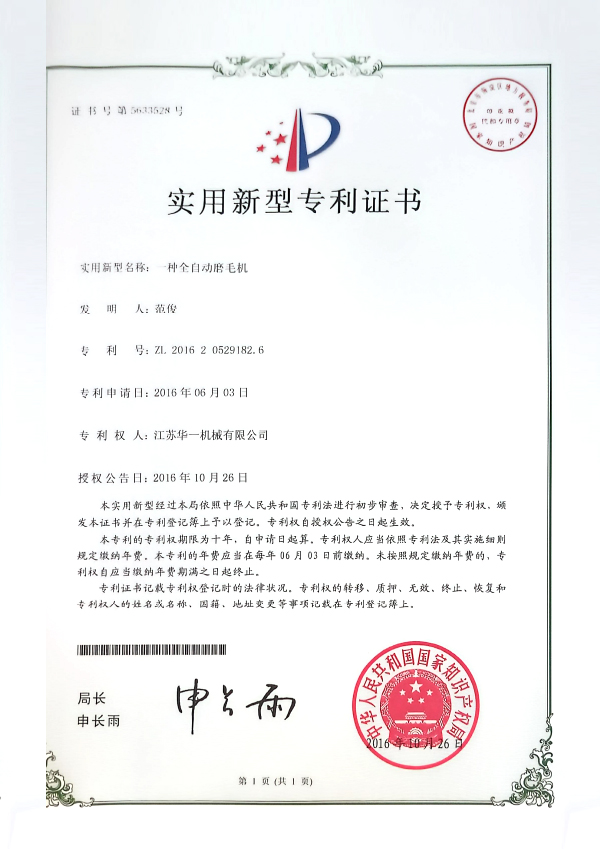What are the key differences in the structural design of brushing machines?
The structure of a brushing machine directly determines its processing capacity and adaptability. Currently, the mainstream structures on the market include vertical brushing machines, horizontal brushing machines, and customized brushing systems.
Vertical brushing machines: Vertical brushing machines utilize a vertical, top-to-bottom design. This compact and rational structure is ideal for continuous production line layouts, especially in high-volume production scenarios. Their unique feature is that the fabric is transported in a single direction from infeed to outfeed, facilitating automated docking and high-speed operation. This machine is particularly suitable for wide fabrics, such as home textiles like bedding and curtain fabrics. Its efficient vertical brushing system improves brushing efficiency and quality while maintaining a smooth surface, significantly enhancing overall production speed and processing consistency.
Horizontal brushing machines: Horizontal brushing machines have a relatively short fabric transport path, but their design allows for multiple reciprocating brushing cycles within a confined space. This structure is particularly suitable for thicker, heavier fabrics such as wool, corduroy, and heavy cotton. Repeated brushing effectively enhances the surface volume and softness of the fabric. The horizontal machine's design also offers advantages in its excellent controllability and adjustability. By adjusting the brush roller angle, speed, and pressure, it can achieve in-depth treatment of different materials, improving surface uniformity and texture.
Customized Brushing Machines: Customized brushing machines are highly flexible equipment developed to meet diverse textile processing needs. They are particularly suitable for processing multiple varieties, small batches, and fabrics with specialized surface treatment requirements. With the growing market demand for differentiated, high-value-added fabrics, traditional standardized equipment often struggles to balance efficiency and quality when processing complex fabric types. Customized brushing machines effectively address this shortcoming. Through the personalized design of the core brush structure and control system, these machines not only improve the cleanliness, uniformity, and texture of the fabric surface, but also effectively control energy consumption and material waste, enhancing the overall economic and sustainable nature of the process. Each structure has its own application scenarios, advantages and disadvantages. Users can choose based on factory layout, production capacity requirements, and fabric characteristics.
Which fabrics are suitable for brushing machines?
Brushing machines are widely used in the textile industry primarily due to their high adaptability and excellent treatment results for fabrics of varying materials and properties. The purpose and effects achieved by brushing vary depending on the fabric type.
Natural fiber fabrics: Brushing is a fundamental and critical step in the weaving process for natural fiber materials such as cotton and linen. Natural fibers are prone to producing dust, short fiber residue, and surface unevenness during the weaving process. If these problems are not properly removed, they will directly affect the quality of subsequent printing, dyeing, and coating processes. Brushing machines use high-frequency physical brushing to effectively remove loose fibers and impurities from the fabric, resulting in a smoother and more even surface. This not only improves the finished product's appearance but also ensures more uniform dye absorption. Furthermore, for lightweight cotton and linen fabrics, properly adjusting the brush roller pressure can improve the feel and comfort while maintaining surface deformation.
Synthetic Fiber Fabrics: Due to their hydrophobicity and chemical stability, synthetic fiber fabrics often experience static electricity accumulation and a rough surface during textile processing, impacting subsequent finishing and wear. Brushing can reduce surface static without damaging the fiber structure, while also improving the fabric's reflective properties and imparting a softer, more even sheen. In particular, brushing enhances the hand feel of synthetic fiber fabrics used in apparel, home textiles, and luggage, adding value to the product.
Functional Fabrics: For functional fabrics with specialized structures or surface coatings, traditional brushing can pose a risk of damaging performance. Therefore, a high-precision, adjustable, and customized brushing system is required. Such systems precisely control the number of brush rollers, contact pressure, and angle based on the specific fabric structure (such as microporous membranes, waterproof coatings, or multi-layer composite fabrics). This ensures that brushing does not damage the functional layer while improving surface finish consistency and the finished product's appearance. For example, in moisture-wicking sportswear fabrics, brushing can enhance the softness of the inner skin-friendly layer. In waterproof fabric treatments, it removes excess floating fibers, maintains the integrity of the film layer, and improves the fit and comfort of the garment.
What processing effects does brushing provide?
While the basic function of brushing machines is to clean the surface of fabrics and remove impurities, with the continuous advancement of equipment performance and brushing technology, brushing has become a key means of improving the overall quality and market competitiveness of fabrics, imparting them with richer processing effects and commercial value.
Enhancing the fabric's feel and visual texture: The brushing process meticulously combs the fabric's fibers, transforming the originally slightly rough surface into a soft, delicate, and velvety, high-quality fabric, significantly enhancing the fabric's feel and visual texture. In intimate apparel, such as underwear, pajamas, and babywear, brushed fabrics are softer and gentler, significantly enhancing their skin-friendliness. In high-end home textiles, such as bedding and sofa fabrics, the soft-focus, suede-like texture not only creates a sense of luxury but also enhances the overall home ambiance. In casual sportswear, brushing effectively enhances fabric softness, reduces friction with the skin, and improves both comfort and durability. Furthermore, this micro-suede surface creates a soft and even reflection under light, creating a finished product with a richer, more visually pleasing appearance.
Enhancing fabric uniformity and post-process stability: Brushing not only cleans the surface but also removes residual imperfections such as loose hair, short fibers, dust, and knots, significantly improving fabric uniformity and post-process stability. This combined "cleaning + polishing" effect ensures more uniformity during subsequent printing and dyeing, avoiding defects such as color spots and blurred patterns caused by fiber accumulation or particle contamination. During coating and lamination, the brushed surface is smoother and finer, providing an excellent adhesion base for the adhesive layer, thereby improving lamination strength. Furthermore, the moderately firm surface provides enhanced stability and setting during ironing and heat-setting processes. For fabrics requiring high printing and dyeing precision, brushing not only helps improve product yield and reduce rework, but also further optimizes production schedules and cost efficiency, making it a key step in improving overall processing quality.
Improving fabric functionality and longevity: In the field of functional fabrics, such as sports and protective fabrics, brushing not only enhances surface texture but also imparts additional practical properties. By controlling the direction and intensity of the brushing, a uniform microscopic layer of fleece is formed on the fabric surface, creating an effective moisture-wicking system that helps quickly absorb and distribute sweat, ensuring a dry and comfortable wear. The brushing process also removes excess short fibers from the fabric, reducing pilling risks at the source and significantly enhancing the fabric's anti-pilling properties. Furthermore, the brushed fabric structure becomes more compact and stable, offering excellent washability. Even after repeated washings, it retains its original soft feel and clean appearance. These performance improvements make brushing an irreplaceable tool in the processing of high-end functional fabrics.
Equipment Empowerment: The new generation of intelligent equipment, represented by the Jiangsu Huayi Machinery Co., Ltd.’s VX7 brushing machine, not only boasts high-speed brushing capabilities to meet the stringent efficiency requirements of high-volume production lines, but also achieves breakthroughs in both process and cost through multiple optimized configurations. Its continuous operation system supports 24/7 uninterrupted operation, eliminating the time-consuming need for frequent adjustments and significantly improving production stability. Its energy-saving design precisely controls brush roller speed and motor power, reducing energy consumption while maintaining efficient output. Furthermore, the VX7 features an intelligent adjustment function that flexibly sets optimal brushing parameters based on the material, width, and thickness of the fabric, preventing over- or under-brushing and ensuring uniform and stable treatment of every meter of fabric. The widespread use of this type of intelligent brush equipment not only streamlines the operating process and reduces dependence on manpower, but also effectively controls energy consumption and losses. It is especially suitable for modern fabric processing companies facing multiple varieties and large orders.

 简体中文
简体中文 English
English عربى
عربى